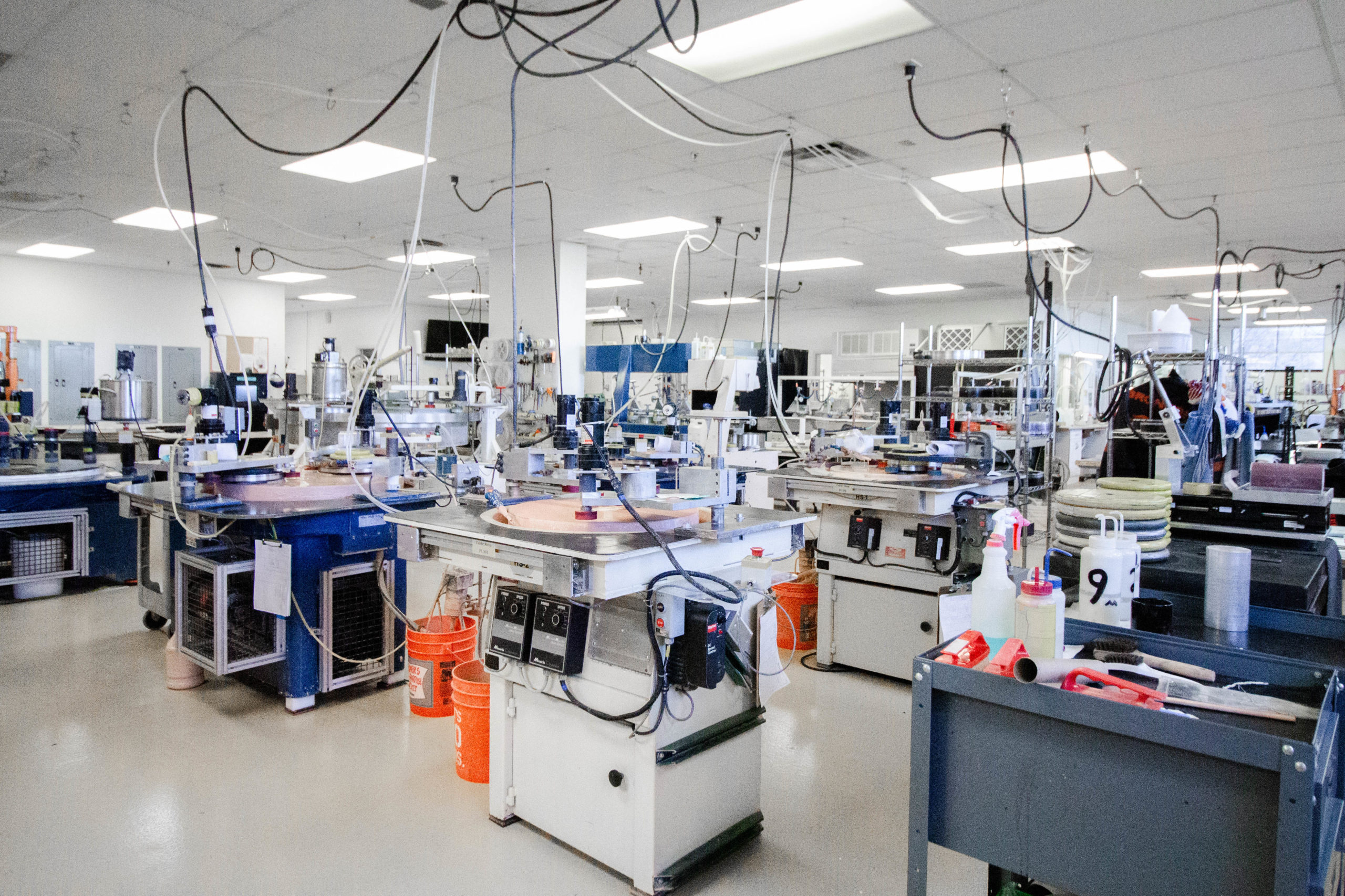 High precision optics and optical fabrication
High precision optics and optical fabrication
Custom optical fabrication
The enterprise has its optical production. Several own designs of equipment have been created, including for the manufacture of thin-walled reflectors by the vacuum bending method; for centering lenses in frames; for assembling, aligning, and testing precision projection lenses. Technological processes for processing new brands of glass have been introduced, technological problems arising in the manufacture of the most complex prisms of the Amichi type, roof-shaped, etc. have been resolved. All this allows the manufacture of custom optical fabrication units and components.
- Optical components, optical coatings:
- lenses (including diffraction lenses), prisms, plates, magnifiers;
- bifocal sphero-prismatic elements;
- spherical aerostatic bearings;
- reflectors obtained by vacuum bending;
- certification and test photomasks;
- highly accurate grids, masks, scales; linear and angular worlds, limbs, raster scales;
- diffraction gratings (including divider gratings that redistribute radiation in orders of equal intensity), diffraction curators, laser radiation converters (including converters into a line, a set of points, intersecting lines, a ring);
- microlens rasters on optical glass and PMMA in the form of close-packed spherical (hexagonal or orthogonal packing) or cylindrical lenses;
- two-layer blocks;
- diffusers, homogenizers;
- optical coatings: interference, polarizing, antireflection.
Coating optics
One of the very important parameters that can be found in the technical descriptions of binoculars, telescopes, and telescopes is the optical enlightenment. As is known, the antireflection coating of the lenses increases the light transmittance of an optical device. So, to reduce the amount of scattered and reflected light from the surface of optical elements of the structure of binoculars, telescopes, telescopes, microscopes, sights, and other optical devices, special coatings are applied to the surface of lenses and prisms of the air-glass interface - films.Therefore, when choosing binoculars or a telescope, keep in mind that a high-quality optical device must necessarily have a good antireflection coating, c oating optics, and not only on external elements. A high-quality antireflection coating contributes to the correction of light transmission, increases the brightness and contrast of the picture, which is especially important when observing in low light conditions. As mentioned in other articles, the following types of enlightenment are distinguished:Single-layer coating (Coated, C)Fully coated (FC)Multi-coated (MC)Fully multi-coated (FMC)
oating optics, and not only on external elements. A high-quality antireflection coating contributes to the correction of light transmission, increases the brightness and contrast of the picture, which is especially important when observing in low light conditions. As mentioned in other articles, the following types of enlightenment are distinguished:Single-layer coating (Coated, C)Fully coated (FC)Multi-coated (MC)Fully multi-coated (FMC)
High precision custom optics
High precision adjustable optical prism is used to redirect or refract the light at a given angle. The exact angles between clear and flat polished surfaces will depend on the type of application required. Consequently, its design is the determining factor in the interaction of the rays with it. The rectangular prism is one of the most commonly used optical prisms with a 90-degree reflectivity of incoming light.ARO offers a wide range of customizable large-size high precision custom optics in a variety of designs, from substrates to vision to infrared, and a variety of coating options. Projects include standard rectangular, Amici, Penta, Schmidt, Wedge, Anamorphic, Equterior, Dove, or Rhomboid prisms, in addition to Corner Cube reflectors or Light Pipe homogenizing rods. Anti-reflective coatings include MgF2, UV-VIS, UV-AR, VIS 0 °, VIS-NIR, or multiple laser lines. Alpine Optics is a professional optical prism manufacturer, purchasing laser-quality optical prisms and selling custom-made optical prism assemblies, and you can consult the price of UV and IR grade optical prisms wholesale.

